
Stephen T. Shankland/CNET
One of the stars of last week’s Apple event wasn’t a well-known name or even a regular on stage for product demonstrations. Instead, it was a person who once cheered as a steamroller (and blender and dynamite) demolished an iPhone.
That man was Kevin Lynch.
It was up to Lynch to demonstrate — for the first time in public on Sept. 9 — the features of Apple’s newest gadget, the Apple Watch. At the Cupertino, Calif., venue, Lynch showed off the ability to send a heartbeat to a friend through haptics — touch-feedback technology — and communicate through a high-tech version of Morse code. Lynch also demonstrated the integration of Apple’s Siri digital voice assistant in the watch and talked up partnerships with companies such as American Airlines, Starwood Hotels and Nike.
Overall, it was the Apple Watch, and not the company’s new, bigger-screen iPhone 6 and iPhone 6 Plus devices, that captured the audience’s attention. For Apple, the watch represents its first effort in the hot wearables sector and the first push by Apple into a new market since 2010’s iPad. It helps Apple diversify its product line as it faces slowing smartphone and tablet growth and shows it can still innovate without Steve Jobs at the helm. Apple CEO Tim Cook had promised he would expand Apple’s footprint, and the Apple Watch helps him keep that vow.
It was Lynch who had Cook’s trust to show off Apple’s newest baby. The executive, known to wear cardigans and round spectacles, joined the company in early 2013 after a lengthy stint at Adobe Systems. Lynch is not the typical Apple convert — his time at Adobe was marked by a clash against Jobs over Flash. The widely used technology for Web games and video was one of Adobe’s prized products, but Jobs didn’t want it on his iPhones and iPads. Jobs won.
So how did Lynch end up overseeing the software on Apple’s first wearable?
Apple declined to comment or make Lynch available for an interview. Lynch didn’t respond to a request for comment.
Programming roots
Like many software executives, Lynch’s fascination with technology began at an early age. And even back then, Apple held sway over the man.
Starting in the field of programming at a young age, he studied interactive computer graphics at the University of Illinois, working with artists and engineers in the Electronic Visualization Laboratory, according to his site.
See also
- Adobe CTO Kevin Lynch resigns, headed for Apple
- Adobe ‘shifting focus’ from Apple
- With its debut smartwatch, Apple aims to make wearables fashionable
- CNET’s first thoughts on the Apple Watch
Specifically, Lynch worked as a Mac software developer, creating early Mac applications while at college, “including a desktop publishing program that introduced user interface elements in common use today,” according to his bio from Adobe.
On his personal website, Lynch lists the first Macintosh and the user interface from Apple’s Lisa computer as two of the early influences on his life in computing. In 1984, he helped establish one of the first Mac software startups, Lynch said. He later helped develop the first Mac release of FrameMaker — software designed for writing and tweaking large or complicated documents — and led the group’s core technology team.
Lynch had early exposure to the mobile world with General Magic, a startup that spun out of Apple in 1990 with the goal of creating a “handheld personal communicator” that supported, among other things, multimedia email. Lynch said he “had the great opportunity to work with some of my heroes who had created the Mac.” Bill Atkinson and Andy Hertzfeld, original members of the Macintosh development team, helped start General Magic. The company went public in February 1995 but ceased operations in September 2002.
In 1996, Lynch joined Macromedia, a graphics, multimedia, and Web development software company. There, Lynch ran the team that built the Dreamweaver tool for creating Web pages. It was first released in 1997 and became a solid commercial hit still sold today.
Apple Watch keeps up with the times (pictures)


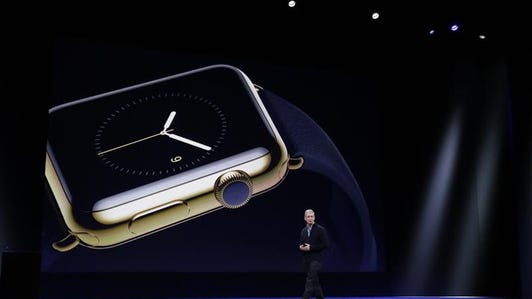

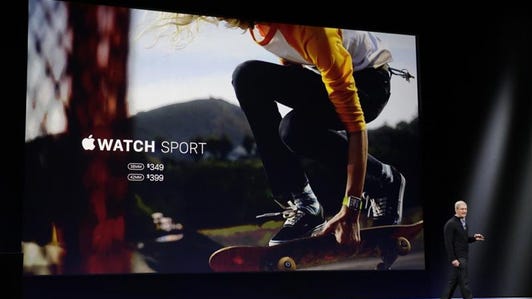

+40 more
Adobe acquired Macromedia for $3.4 billion in 2005, bringing Lynch into the Adobe fold. There, he helped guide the company’s Creative Suite products such as Photoshop and Illustrator for graphic design, video editing, Web development, Flash programming, and photography. Lynch served as senior vice president and chief software architect for Adobe’s platform business unit before being named chief technology officer in 2008. Adobe since has shifted those products to the $50-per-month Creative Cloud subscription.
As Adobe CTO, Lynch was “responsible for shaping Adobe’s long-term technology vision and driving innovation across the company,” his Adobe bio said. He oversaw the company’s advanced technology labs and experience design team, “leveraging their talent and expertise to identify and pursue new research and technology initiatives.”
Clashing “thoughts on Flash”
Lynch’s tenure at Adobe is linked with the company’s Flash Player technology. The browser plug-in, originally developed at Macromedia and a big reason for the acquisition, gave websites the ability to show animations and streaming video, and its usage soared in the early 2000s. Despite Adobe’s efforts, though, Flash is now fading, and Adobe has been trying recapture its influence over online development.
“He didn’t know how to get us onto the next thing,” said one executive who worked with Lynch at Adobe. “He just rode that Flash thing well past its expiration date.”
In October 2009, Lynch starred in a spoof on the TV show “Mythbusters,” called “Adobe Myth Hackers.” In it, Lynch and a colleague tackled the issue of Flash on the iPhone and destroyed iPhones over and over in an attempt to cram Flash into the device. Their ultimate point was that developers at that time could use Flash in standalone apps for the iPhone.
Flash thrived for years after Adobe’s acquisition of Macromedia, and Adobe did well selling its Flash Professional authoring software for developers. But late in the last decade, it became clear that Web standards ultimately would prevail instead. The biggest blow came when Apple refused to allow the software onto its iPhone and iPad.
Leading the push against Flash was Jobs. In April 2010, Jobs posted a nearly 1,700-word treatise, called “Thoughts on Flash,” on Apple’s website, laying out his argument for why Flash doesn’t work on mobile — including its drain on battery life, bugginess, and issues with touchscreens.
“Flash was created during the PC era — for PCs and mice,” Jobs wrote. “Flash is a successful business for Adobe, and we can understand why they want to push it beyond PCs. But the mobile era is about low-power devices, touch interfaces, and open Web standards — all areas where Flash falls short.”
Adobe, though, tried to convince Apple it was wrong. It ran a massive ad campaign, both online and in print, that touted its developer base and argued that Apple was “taking away” people’s “freedom to choose” how their mobile experiences were created. And Lynch spoke and wrote publicly about why Flash would work on mobile as he pushed Apple to change its stance.
In February 2010, less than a week after Jobs unveiled the first iPad, Lynch took to Adobe’s corporate blog to again make his argument for Flash. He noted that Flash started for pen computing tablets — way before the market was ready — and the software only existed in 2010 because its creators found an alternative use for creating graphics- and video-rich Web content.
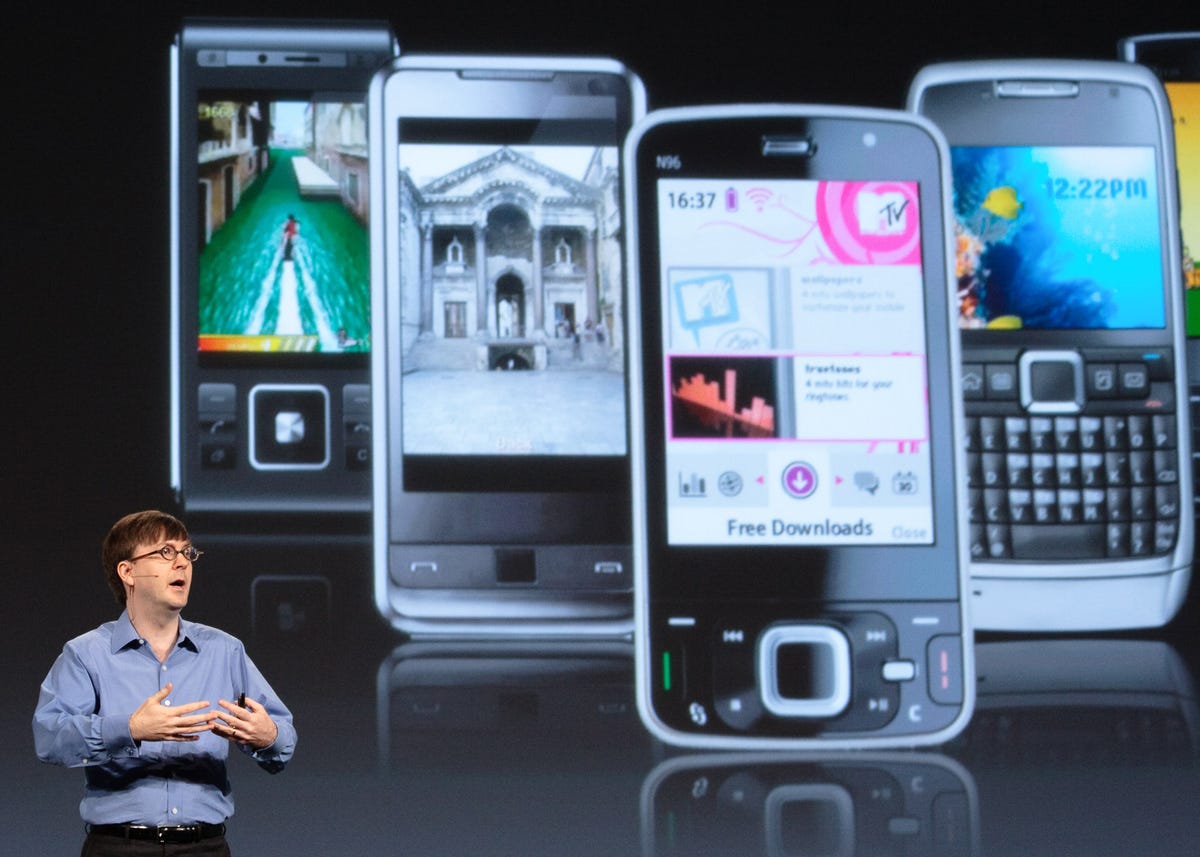

Stephen Shankland/CNET
“We are at an important crux for the future of Flash,” Lynch wrote. “A wide variety of devices beyond personal computers are arriving, many of which will be used to browse the Web…The Flash engineering team has taken this on with a major overhaul of the mainstream Flash Player for a variety of devices.”
In May 2010, a month after the iPad went on sale and Jobs posted his ” Lynch accused Apple of playing politics instead of improving technology.
“We don’t want to play technology games when Apple is playing a legal game,” Lynch said at the Web 2.0 Expo in San Francisco. “We’re focusing on everybody else. There’s a huge wave of innovation, there’s going to be a wide range of devices.”
Adobe had shifted its focus away from Apple devices for both Flash Player and its close cousin called AIR. Instead it was working with Apple rivals such as Google, Research in Motion (now called BlackBerry), Palm (which Hewlett-Packard bought but later sold to LG), Microsoft, and Nokia (whose devices business Microsoft purchased in April).
“We feel confident that were Apple and Adobe to work together as we are with a number of other partners, we could provide a terrific experience with Flash on the iPhone, iPad , and iPod Touch,” Lynch, serving as Adobe CTO, wrote in a company blog post, which was a direct response to Jobs’ post.


Stephen Shankland/CNET
Adobe tried hard to adapt Flash to the mobile world, first with the lesser Flash Lite version and later with a full-fledged version only for higher-end phones. Google backed the technology on Android — perhaps as a way to distinguish its operating system from Apple’s iOS. So did BlackBerry, Nokia, and Palm. But there were problems with performance and compatibility with desktop Flash apps that assumed the presence of a keyboard and mouse.
Unfortunately for Adobe and Lynch, the arguments in favor of Flash fell flat. Jobs didn’t budge, and Flash remained banned from the iPhone and iPad browsers. In addition, the wide range of devices using Flash never really materialized, particularly as Apple kept taking bigger and bigger chunks of the mobile device market and some of the Flash supporters, such as Palm, folded.
At the same time, years of work at browser makers to move beyond Flash on PCs was bearing fruit with new technology built straight into browsers. It became clear that Web development had taken a new direction across the whole industry.
In 2011, Adobe bowed to the inevitable and scrapped the project. Shortly afterward, it started redirecting much of its Flash effort into Web standards work.
“Adobe belatedly embraced Web standards, but by then the damage was done,” with developers looking elsewhere for tools, the Adobe executive who worked with Lynch said.
Starting a new chapter
Adobe in March 2013 confirmed that Lynch had left the company to go to Apple and that it wouldn’t be filling its CTO position. Apple, meanwhile, simply said Lynch joined Apple as vice president of technology, reporting to Bob Mansfield. Apple created Mansfield’s group as part of a shakeup in October 2012, which included the departure of iOS software chief Scott Forstall and retail chief John Browett.
Lynch’s hire caused consternation among the tech press and other Apple watchers. Apple ultra fanboy John Gruber, of the Daring Fireball blog, called Lynch a “bozo” and a “bad hire” and said he had “a bad feeling about this.”
At the time of Lynch’s move, a person close to Adobe’s board told CNET that “I think Lynch is fascinated by the intersection of hardware and software, and Adobe doesn’t have that. It’s completely different than anything he’s ever done.”
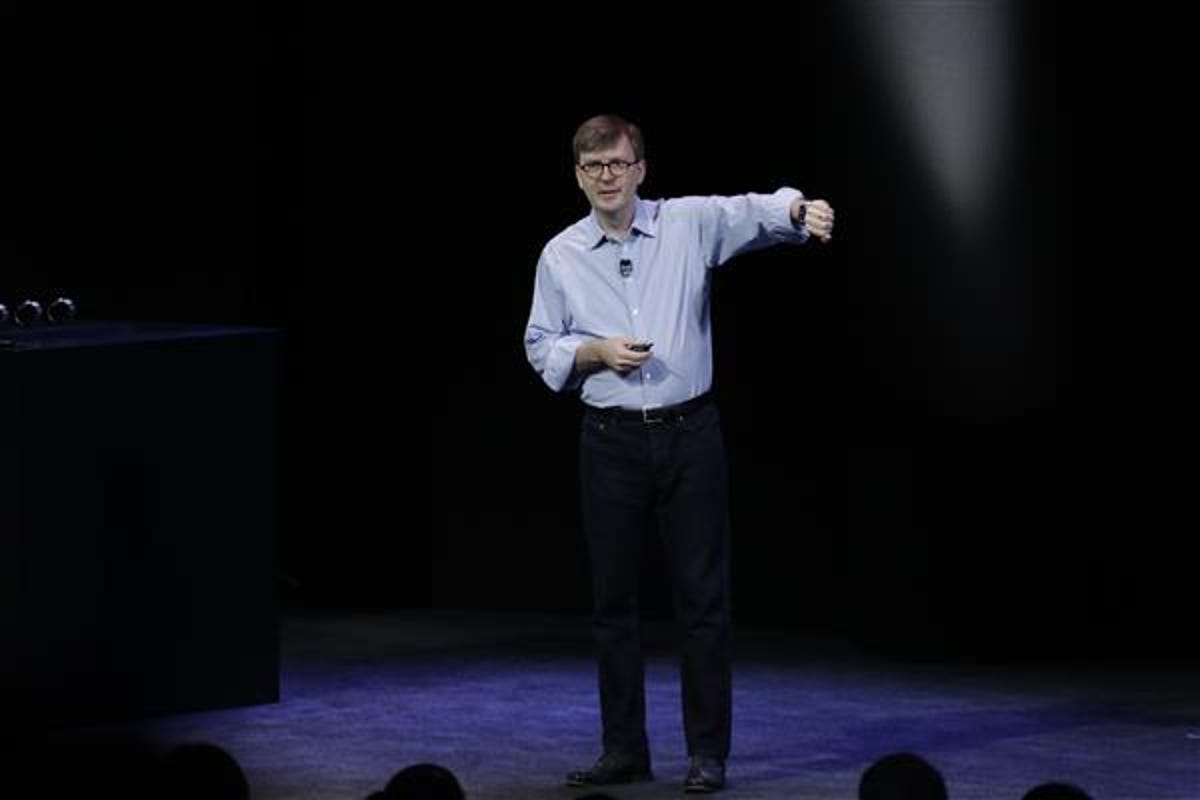

James Martin/CNET
Lynch’s personal website, meanwhile, doesn’t provide any details about his role at Apple beyond saying he’s vice president of technology at Apple, “working with an incredibly talented team.”
Lynch doesn’t rank high enough to be a part of Cook’s core executive team, but his role leading software development for the Apple Watch puts him in the spotlight.
For now, Lynch appears to be settling in well at Apple, which includes adopting the company’s strict code of secrecy. He joined Twitter in November 2006 and posted occasionally about Adobe over the years from @kevinlynch. His tweets abruptly stopped in March 2013 — the same month he joined Apple — and he didn’t post again until the company’s Sept. 9 event. Even then, neither of Lynch’s tweets were written by him but instead were retweets, including one from ABC’s David Muir, who said, “How fun to send the first tweet ever from an Apple Watch. See you tonight.”
Lynch’s wife was among the throng waiting to enter the demo area after the Apple Watch unveiling, but she couldn’t reach her husband via text message to get inside. CNET News asked her if she was wearing one of the new Apple Watches, and she said she didn’t have any idea what her husband had even been working on until he showed it on stage.
The verdict’s still out on the Apple Watch and whether the software and other features will revolutionize the wearables market.
Apple demonstrated working models of the Apple Watch at its event last week, but it won’t be shipping the device until early next year. Along with time to get production going, the long gap between the unveiling and the product launch gives Apple the opportunity to streamline the software, get app developers on board, and make sure users have the kind of experience they expect from Apple devices.
That means a lot is riding on Lynch’s ability to deliver.
“The Apple Watch is not a hobby,” said Tim Bajarin, an analyst with Creative Strategies. “This is a serious product that I believe Apple believes is a game changer…Giving this to Kevin is both prestigious and critical.”
The Apple iPhone 6 and iPhone 6 Plus have arrived (pictures)


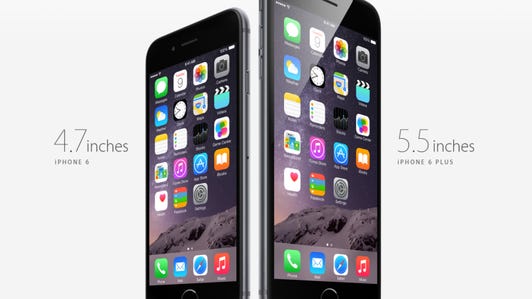

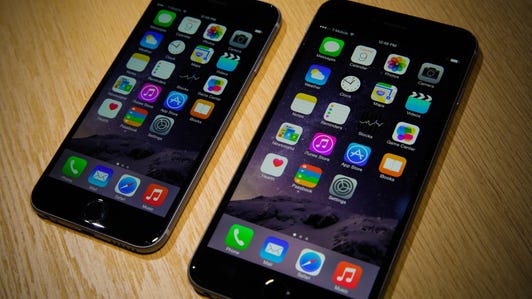

+19 more



